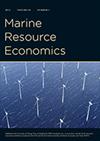Economics of Aquatic Foods: Combining Bioeconomics and Market Analysis to Inform Regulations That Deliver Value
IF 1.7
3区 经济学
Q2 ECONOMICS
引用次数: 0
Abstract
Bioeconomic modeling and seafood market analysis both have rich intellectual traditions that have contributed insights to understanding the economics of aquatic foods. This paper argues that these traditions, which developed mostly in parallel, should be combined more purposefully to understand management problems in fisheries and aquaculture. First, modeling the feedback between economic incentives and biological mechanisms is essential for avoiding management failure, and prices provide important incentives. Second, the form of management affects opportunities to generate value, influencing patterns of exploitation and the types of products that come from fishery resources. Third, price incentives in fisheries and responses to management depend on market context, including competition with aquaculture. By combining these insights with a modern empirical focus on counterfactuals, including both reduced-form and structural modeling approaches to causal inference, economists can inform policy and help to deliver a wide range of values from the production and consumption of aquatic foods.水产食品经济学:结合生物经济学和市场分析,为提供价值的法规提供信息
生物经济模型和海鲜市场分析都有丰富的知识传统,有助于理解水产食品的经济学。本文认为,这些传统大多是并行发展的,应该更有目的地结合起来,以了解渔业和水产养殖的管理问题。首先,建立经济激励和生物机制之间的反馈模型对于避免管理失败至关重要,而价格提供了重要的激励。第二,管理形式影响创造价值的机会,影响开发模式和来自渔业资源的产品类型。第三,渔业的价格激励和对管理的反应取决于市场情况,包括与水产养殖的竞争。通过将这些见解与现代实证对反事实的关注相结合,包括因果推理的简化形式和结构建模方法,经济学家可以为政策提供信息,并帮助从水产食品的生产和消费中提供广泛的价值。
本文章由计算机程序翻译,如有差异,请以英文原文为准。
求助全文
约1分钟内获得全文
求助全文
来源期刊

Marine Resource Economics
农林科学-渔业
CiteScore
4.30
自引率
10.30%
发文量
25
审稿时长
>12 weeks
期刊介绍:
Marine Resource Economics (MRE) publishes creative and scholarly economic analyses of a range of issues related to natural resource use in the global marine environment. The scope of the journal includes conceptual and empirical investigations aimed at addressing real-world oceans and coastal policy problems. Examples include studies of fisheries, aquaculture, seafood marketing and trade, marine biodiversity, marine and coastal recreation, marine pollution, offshore oil and gas, seabed mining, renewable ocean energy sources, marine transportation, coastal land use and climate adaptation, and management of estuaries and watersheds.
 求助内容:
求助内容: 应助结果提醒方式:
应助结果提醒方式:


